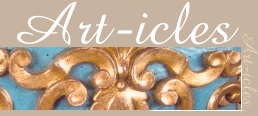      
|

Florence and Tuscany - The 19th century (date : 15 September 2001), It was above all during the nineteenth century that the work of Tuscan cabinetmakers flourished. The arrival of Elisa Baciocchi (Grand Duchess of Tuscany) in 1809, brought a change of style. After an initial neo-classical phase, certainly charming but all in all rather ordinary, Florentine furniture asserted itself as original and as being identifiable to a particular region. Nevertheless, the French influence persisted because of the Bonapartes. In fact, they employed local cabinetmakers but demanded items in the Parisian style, imitating Jacob. The Pitti Palace, re-furnished by the architect Bienaimé, using pieces designed by Percier and Fontaine imported from Paris, served as a means to spread French trends. Also, Tuscan furniture retained the 'Empire' line and ornamentation. In 1805, Elisa Baciocchi took on the role of sponsor by renovating the Seigniory Palace at Lucca (current seat of the provincial government) and by founding a royal manufactory aimed at meeting the needs of the aristocracy. Furniture for the Ducal Palace of Lucca was constructed there, but also for the Palace at Massa, the Royal Villa of Marlia and the Pitti Palace. The running of the establishment was entrusted to the Parisian cabinetmaker Jean-Baptiste Gilles Youf (1762 - 1838). Its production marked the advent of Tuscan Empire style with Pietro Massagli, Luigi Manetti and Giovanni Socci. The latter, carpenter to the Grand Duke of Tuscany from 1807 to 1839 would be one of the driving forces of this new development. Socci is above all remembered for the furnishing he produced for the Pitti Palace, in particular the 'drum' room, and, in France, for Napoleon's travel desk. This was a sort of convertible escritoire which when closed resembled an oval chest of drawers, but which contained a concealed removable chair and had a top which opened in two laterally, with a rising section in the centre containing pens and papers. The Pitti Palace has kept two examples, while the third, a present from Napoleon to Elisa is at Malmaison. The Tuscan Grand-Ducal style is recognisable by its light bronze ornamentation (Socci worked with the bronzesmiths Marchesini and Martini) and by the use of carved and gilded wood. Furthermore, the Tuscans (Messagli, Manetti, Ricci, Conti, Liverani and Ciacchi among others) preferred to work with hard woods like cherrywood and ebony. The nineteenth century is further marked by the renaissance of marquetry. This took off mainly due to the talent of Spighi, who was based locally in Florence in the 1780's. The term 'school' can almost be used : his pupils Pietro Mineti and Paolo Moscini spread procedures such as 'netting', certainly already known, but much improved by the master. Marquetry in geometric designs using monochrome wood (box) was characteristic of his output. His rare attempts at using green colouring have not survived the test of time, the dyes were of rather poor quality. He was not especially gifted at representing figures and left that to others. |
  |
|||
|
|||||